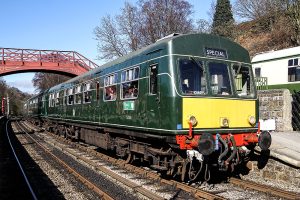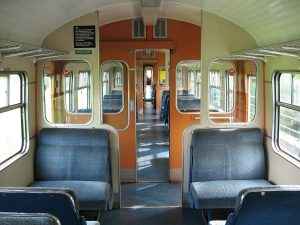An icon in its own right
In the annals of railway history, certain classes of locomotives stand out as iconic symbols of an era. The Class 101, a distinguished diesel multiple unit (DMU) train, is one such example that continues to captivate enthusiasts and historians alike. Renowned for its classic design, reliability, and integral role in revolutionizing commuter travel, the Class 101 has left an indelible mark on the railways of the United Kingdom.
Origins and Evolution: The origins of the Class 101 can be traced back to the 1950s, a time of innovation and transformation in the British railway industry. Developed by the Metropolitan-Cammell Carriage and Wagon Company, the Class 101 was part of the British Railways’ Modernisation Plan, a comprehensive effort to modernize the aging rail network. Introduced in 1956, the Class 101 was designed to replace steam-powered trains, heralding a new era of cleaner and more efficient diesel travel.
Design and Aesthetics: One of the most striking features of the Class 101 was its elegant and timeless design. Characterized by its cream and green livery, the Class 101 exuded a sense of sophistication that set it apart from its predecessors. The streamlined exterior was complemented by well-appointed interiors, featuring comfortable seating, large windows, and ample legroom. The attention to detail in both form and function contributed to the Class 101’s popularity among passengers.
Technical Excellence: Beneath its stylish exterior, the Class 101 boasted technical innovations that enhanced its performance and reliability. Equipped with a diesel engine and hydraulic transmission, these trains offered smoother acceleration and quieter operation compared to the steam locomotives they replaced. This advancement not only provided passengers with a more comfortable ride but also reduced maintenance requirements and operational costs for the railways.
Versatility and Adaptability: One of the Class 101’s most remarkable attributes was its versatility. It was designed to serve both urban and rural routes, catering to a wide range of travel needs. This adaptability made the Class 101 a workhorse of the British Railways, connecting towns and cities, ferrying commuters, and providing essential transport links to remote communities. Its reliability and ability to navigate diverse terrains made it an essential part of the rail network.
Cultural Impact: Beyond its technical prowess, the Class 101 became a cultural touchstone for many. Its distinct appearance and ubiquitous presence on British tracks made it a recognizable and enduring symbol of mid-20th-century travel. The Class 101 was often featured in films, television shows, and literature, contributing to its status as an icon of its time. Even as the years rolled on and newer train models emerged, the Class 101 retained a special place in the hearts of rail enthusiasts who celebrated its role in shaping the UK’s transportation landscape.
Legacy and Preservation: As the years progressed, the Class 101 eventually began to be phased out in favour of more modern trains. However, its legacy persisted. Today, several preservation groups and railway heritage organizations are dedicated to maintaining and restoring Class 101 units. These efforts not only pay homage to the train’s historical significance but also offer future generations the opportunity to experience the elegance of rail travel from a bygone era.
The Class 101 stands as a testament to the harmonious convergence of aesthetics, engineering, and social progress. Its graceful design, technical excellence, and cultural impact have etched it into the collective memory of the British railway landscape. As the wheels of time continue to turn, the Class 101 remains a beloved relic, reminding us of the transformative power of innovation and the enduring allure of classic elegance on the rails.








